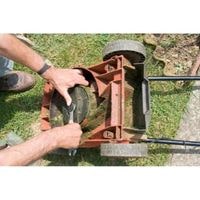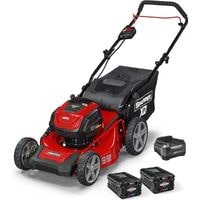Snapper Lawn Mower Won’t Start. You’ve put on the nice dresses, but one thing is bothering you: how to keep your lawn neat and tidy.
So you agree with your spouse that he or she can handle cleaning the house while you tackle the gardening work alone.
You turn on your Snapper lawnmower, but it won’t start. Could be a near-endless list of possible problems with all engines or power equipment from fuel delivery issues to loose connections and faulty parts.
Snapper Lawn Mower Won’t Start

In this article, we discuss some problems with snapper lawn mowers that won’t start.
Fuel Filter Problem
The fuel filter may be clogged. Typically, a clogged fuel filter is caused by too much ethanol in the fuel, which causes it to build up over time.
The best way to deal with some of these common lawn mower problems is usually by cleaning out your clogged lawn mower’s fuel tank as well as making sure that you’re paying attention to when
your gas needs to be changed so that it can’t fall short and push everything back down into the gas tank.
Ignition Coil Failure
When the ignition coils are faulty, the engine may fail to start. Check the spark plugs before replacing any of them.
If each spark plug is working properly on its own, replace the faulty ignition coil in question to get your lawnmower back up and running.
Fault With Flywheel Key
the flywheel key may be broken. The flywheel key is a small metal piece that goes inside of your lawnmower and helps it to run smoothly every time you start it up.
If the engine of your lawnmower suddenly stops due to running into something obtrusive, the flywheel key will break off so that damage can be prevented for either your engine or its parts.
When you have your lawn mower checked out, make sure to take a closer look at the flywheel key because if it has chipped or broken off during use, you may need to replace it before hitting the grass again.
Carburetor Malfunction
There might be a clog in the carburetor. It is most likely that a carburetor will become clogged when fuel is left in the lawnmower for a long period of time.
Some ingredients of the fuel may evaporate, leaving behind a thicker substance that can build up and prevent gas from reaching the air inside.
If you want to check if this is your problem, try cleaning out your carburetor by spraying down some carb cleaner onto it or soaking it in a bucket with it.
If another buildup starts to happen after cleaning it out, then rebuild or replace the carburetor altogether.
Defective Spark Plug
Inspect the spark plugs. Look for signs of wear and tear, such as the porcelain insulator being cracked or damaged, a missing electrode at the center, or a heavy buildup of carbon around the center terminal.
Don’t forget that if there is a missing electrode, it means that the engine will have to be cranked harder in order to start running smoothly because it’s not receiving enough energy from somewhere else.
Also, if you see build-up around the central terminal it might mean contaminated fluids flowing through your engine, and in order to prevent this from happening while still driving you to need to replace those spark plugs straight away.
Error Rewinding Spring
The Rewind spring on your reel might be damaged, or the wire might have become detached from the handle. Or it could have been left out of the housing entirely.
If one of these things is wrong, you’ll lose your fishing line every time you reel in a fish. There are other possible causes as well sometimes poor assembly can cause unexpected results.
If your PowerShot isn’t getting its full range of motion, consider replacing the entire range-finder mechanism.
Recoil Spring Failure
When the starter rope is first pulled and then let go, the recoil spring is supposed to recoil the rope onto a pulley.
If the recoil spring is broken, however, this will prevent it from returning to its proper position on the pulley, which prevents it from starting up your lawnmower.
One can replace a faulty recoil spring, but before you do so you need to make sure that both motor
mounts are properly tightened since they act as safety mechanisms in ensuring that your starter works properly in keeping your engine running like it’s supposed to.
Related Guides
